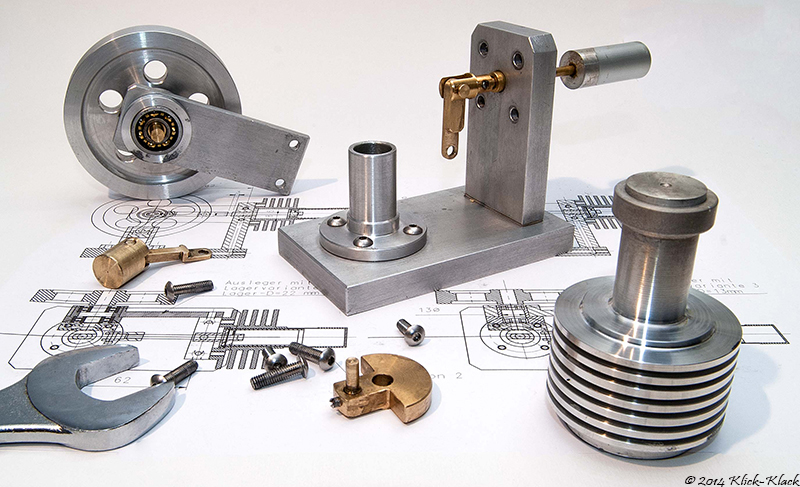Stirling Engines

For the Beta Stirling Engine, the parts list is small,
when compared to other heat engines.
Parts List:
| Working Fluid (Air or another gaseous
fluid): This is contained in the system (ideally there is no exchange with the surroundings). Its purpose is to expand and contract to drive the piston back and forth (producing work), it is called the Working Fluid. |
| Cylinder: The Cylinder is the sealed housing for the Power Piston, Displacer, and working fluid. It also is heated constantly on one end and cooled on the other side, so it must be made of a durable material that has a high heat capacity (as to avoid it overheating as the engine runs). |
| Power Piston: This pistons purpose is to be pushed back and forth by the working fluid as it expands and contracts. The Power Piston is attached to the Crankshaft via a connecting rod and eccentric. Together these three pieces convert the flow-work of the working fluid into shaft-work. |
| Crankshaft: The Crankshaft, driven by the Power Piston, is where useful energy leaves the system in the form of shaft-work. Some of this shaft-work goes into maintaining the cycle; the second eccentric attaches to another connecting rod which drives the Displacer and the Flywheel, both vital to the systems function. |
| Displacer: The Displacer is a piston of sorts that is driven by the Flywheel, slightly offset in timing relative to the Power Piston. The purpose of the Dispacer is to move the sealed air within the Cylinder back and forth between the Heat Source and the Heat Sink. |
| Flywheel: The Flywheel is attached to the Crankshaft, its purpose is to carry momentum to ensure the Displacer and Power Piston move at consistent time intervals. Inevitably the are short time intervals when no work is provided to drive the Crankshaft, during these intervals the Flywheels' momentum will drive the Crankshaft until the piston is providing work again. Without the Flywheel, friction would stop the engine and no work would be done. |
| Heat Source and Sink: All heat engines have a Heat Source and a Heat Sink, one one supplies energy while the other removes energy from the system.The Heat Source is usually an external combustion, but it could be anything warmer than the ambient temperature. The Heat Sink is where heat is rejected, this is a necessary component for the device to operate on a cycle; it accounts for one part of the output energy (though it is a waste). The function of the two is to make sure that the Working Fluid is expanded and contracted. |
Learn about how these components work together to form a
Complete Cycle that provides work here.
Professor: David Newman, Ph.D.
Course: PHYS 212
Semester: Spring 2017
Student: Riley Bickford